
Don’t let currency be a barrier preventing you from exploring and traveling to Thailand, the beautiful Land of Smiles. With this guide, Asia King Travel will help you learn the basics about the national currency of Thailand to add to your preparation for your trip.
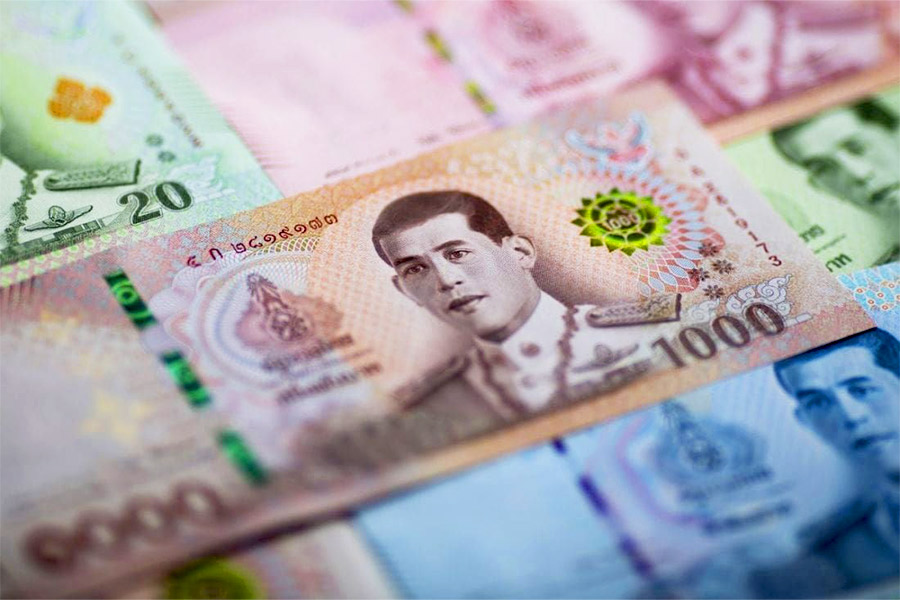
Thai baht is the national currency
The official currency of Thailand is the Thai Baht. It is most regularly referred to as Thai baht or simply baht. The national symbol for Thai baht is an uppercase B with a perpendicular line down the center (฿), and its international code is THB. You can identify the baht by its three-letter code, THB, on foreign currency exchange markets.
Thai Baht banknotes are brightly colored, a reflection of the country's rich cultural past. The front typically showcases portraits of notable figures, including past monarchs in Thai history. Intricate artwork, intricate patterns, and intricate security features are incorporated. The back side frequently features noteworthy sites, moments in history, symbols that are essential to national culture, or influential figures in Thai history. The notes are physically unique due to their varied colors and sizes, which adds to the Thai Baht's overall aesthetic appeal.
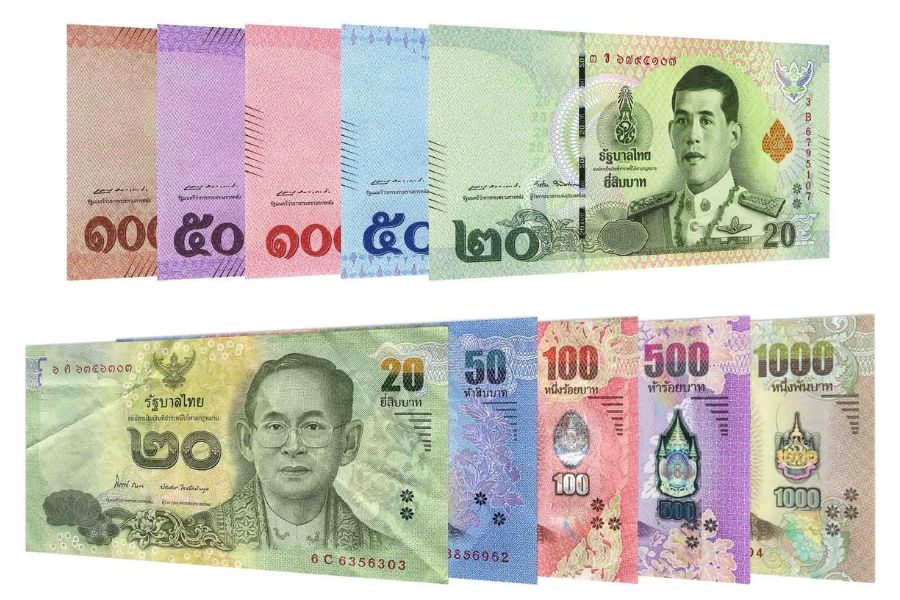
Baht banknotes have different colors
Thai Baht banknotes have undergone various series. Over the Thai baht's existence, there have been 17 series of banknotes. The recent series banknotes are the latest ones released for circulation in Thailand starting from 2018, displaying the picture of King Maha Vajiralongkorn in the uniform of the commander of the Royal Thai Air Force. The old-designed banknotes can still be used normally for any transactions.
Intaglio printing, which the Bank of Thailand utilizes, leaves the print slightly elevated, giving its currency a tactile feel. Specially developed cotton fabric with increased durability is used to manufacture THB. Each banknote denomination has a distinct thickness and feel, making it simpler to distinguish them.
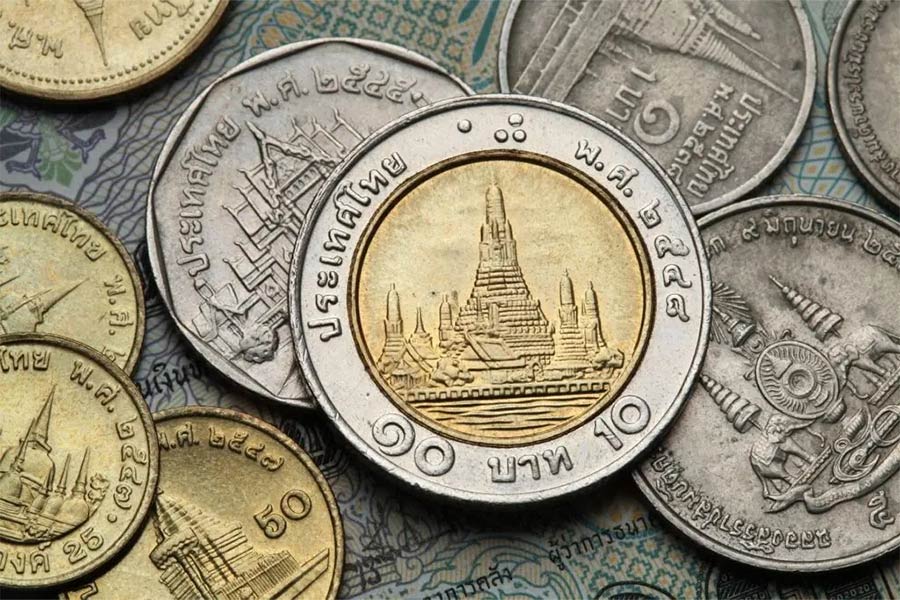
Baht coins are made from nickel-clad iron
Complementing the banknotes are coins in denominations of 1 Baht, 2 Baht, 5 Baht, and 10 Baht. They are made from nickel-clad iron. As the banknotes, the front side of baht coins also showcase the portrait of the recent king, King Maha Vajiralongkorn.
Thai Baht (THB) is issued in both banknotes and coins, with distinctive denominations catering to various transaction values. The banknotes are available in values of 20 Baht, 50 Baht, 100 Baht, 500 Baht, and 1,000 Baht. The coins have denominations of 1 Baht, 2 Baht, 5 Baht, and 10 Baht. This comprehensive range of denominations ensures the practicality and flexibility of Thai currency for everyday transactions, contributing to the efficiency of the country's monetary system.
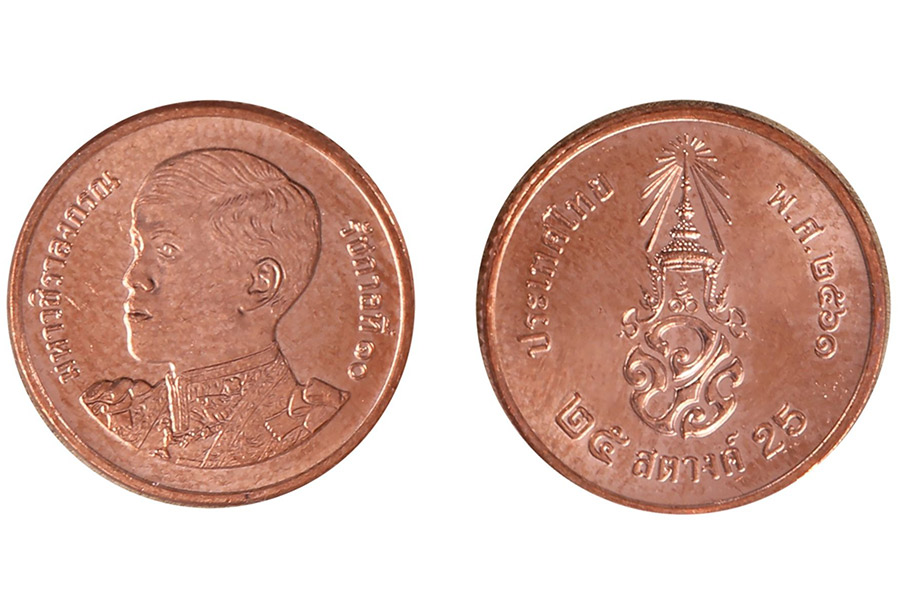
A 50 satang coin has the picture of the King in the front side
In addition, the Thai Baht is further subdivided into smaller units called "satang." One baht is equivalent to 100 satang. Coins in the denominations of 25 and 50 satang are also available for purchase. You can occasionally find satang as change in smaller stores or supermarkets. However, due to its low worth, it is usually just rounded up or down and not commonly encountered in everyday transactions.
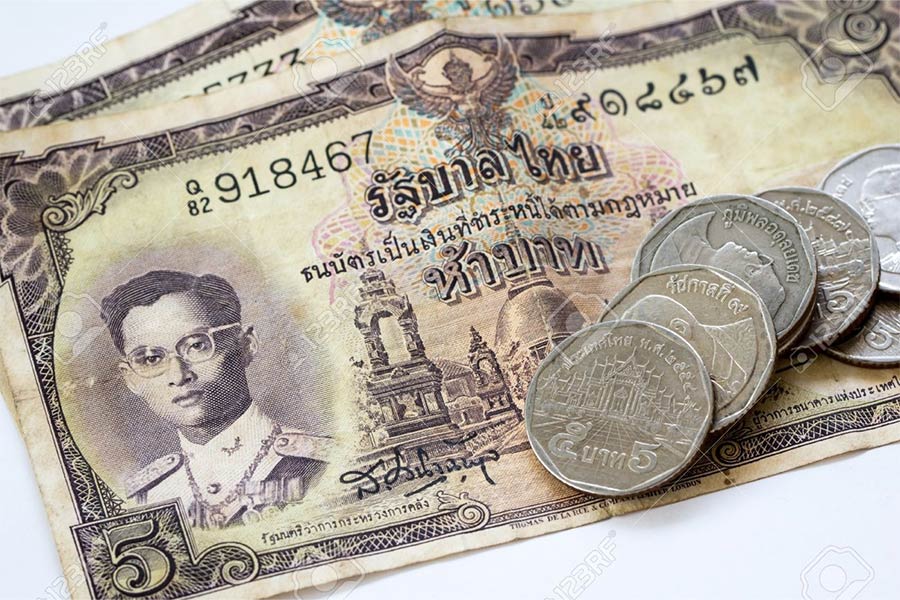
A 9th-series 5-baht note displays the portrait of King Rama IX
The history of Thai currency dates back to the creation of the first standardized coins during the Sukhothai Kingdom in the 13th century. Over the centuries, various rulers introduced different forms of currency. The modern Thai Baht emerged in the mid-19th century and it became the sole legal tender in 1925. Throughout the years, the currency has seen design changes and adaptations, reflecting the nation's cultural and historical developments.
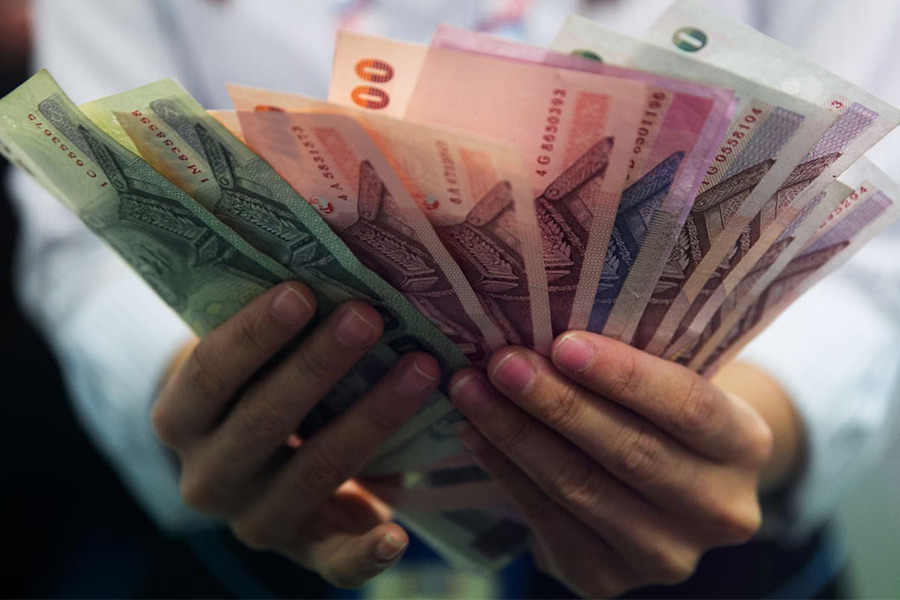
Cash is widely preferred in Thailand
Thailand is largely a cash economy, with most stores, supermarkets, and dining establishments accepting baht as payment. Credit and debit cards are accepted in urban areas and tourist destinations, but extra charges may apply. Foreign money such as dollars or euros can be used in big hotels, restaurants, or airports. However, it is advisable to carry some cash in Thai baht, especially in remote locations where cash is the only accepted payment.
Read more: Reason to travel to Thailand with a travel agency?
Here are Thailand’s currency rates compared to several other currencies as of early December 2024:
.jpg)
Thai baht conversion for several other currencies
In Thailand, currency exchange services are readily available in various locations, catering to the needs of tourists and locals.
Banks: Most banks in Thailand provide currency exchange services. They are generally open during regular business hours, Monday to Friday.
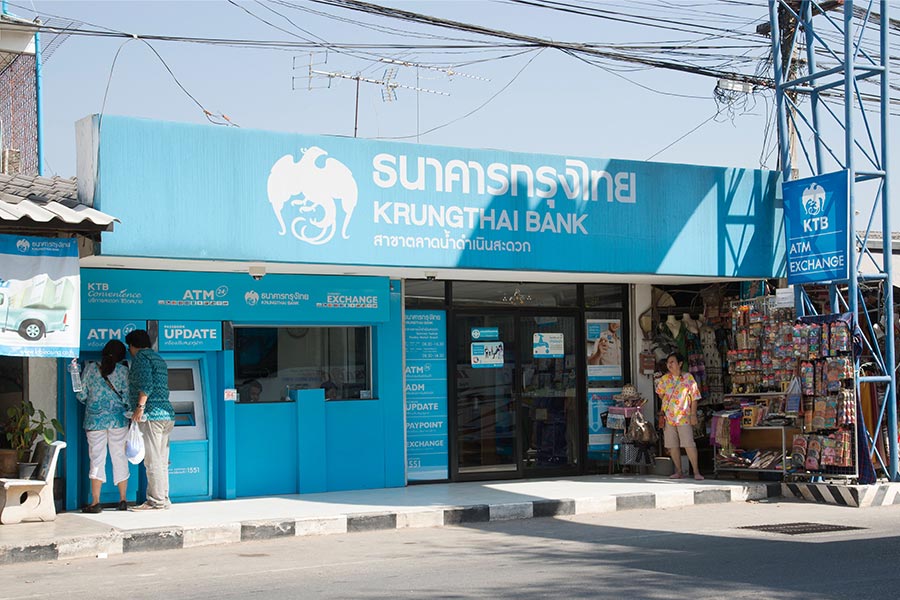
Most banks offer exchange currency service
Currency Exchange Booths: There are lots of currency exchange booths or kiosks with competitive prices in tourist destinations, shopping centers, and transit hubs.
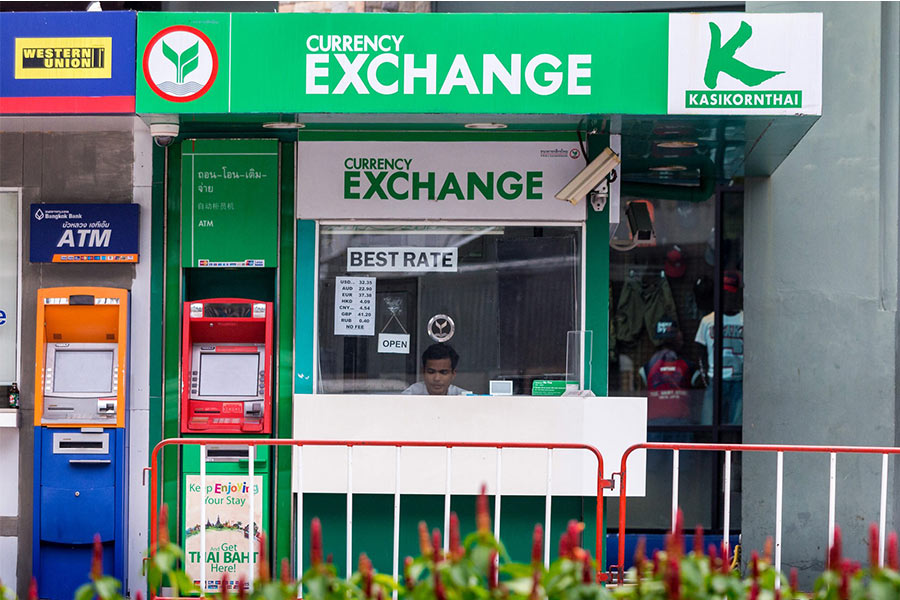
Exchange currency booths can be found at well-known attractions
Hotels: For their customers' convenience, several hotels and resorts offer currency exchange facilities. Rates, however, might not be as good as other options.
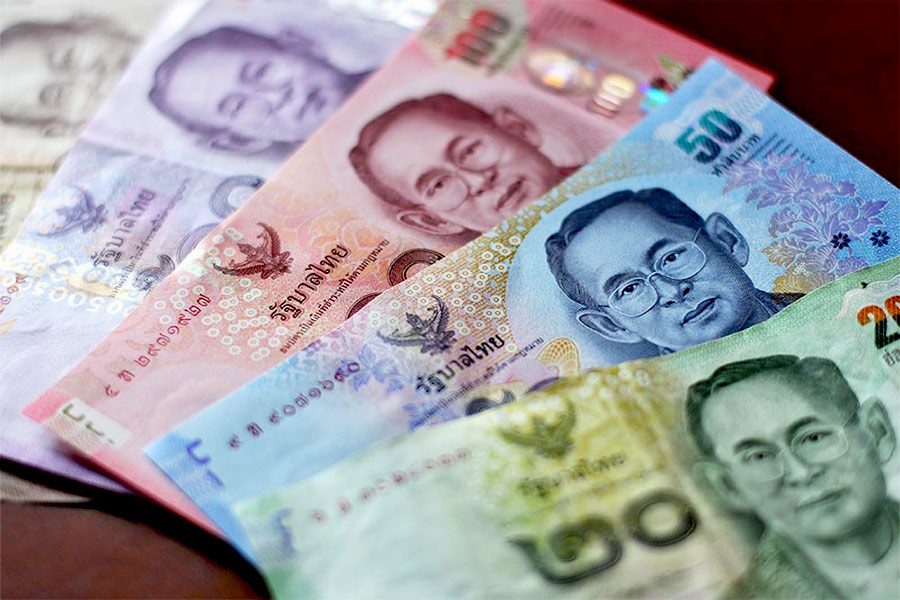
Some hotels allow tourists to exchange currency
Airports: In international airports, currency exchange counters are usually available to assist both arriving and departing travelers.
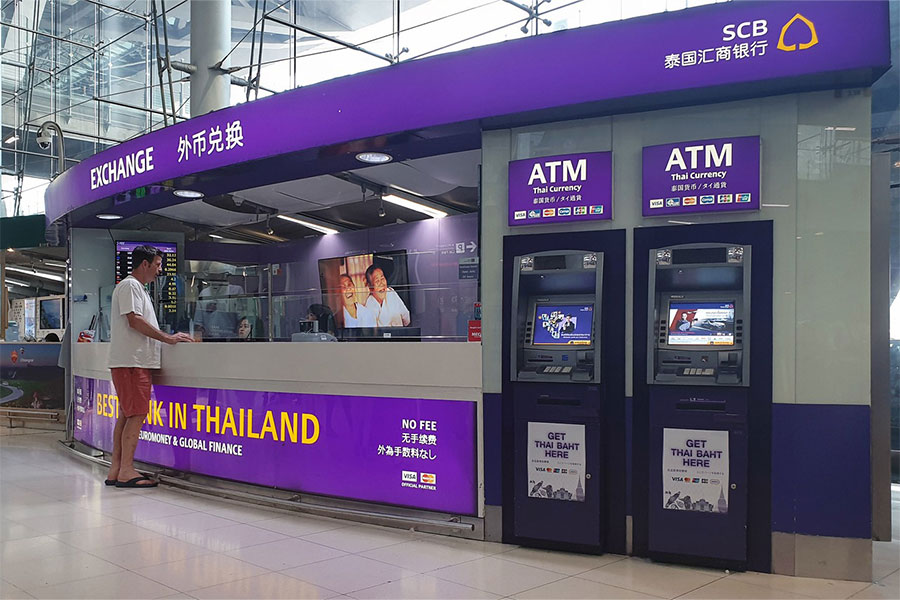
There are many exchange currency counters at international airports
Independent Money Changers: In busy tourist districts, you may find independent money changers offering competitive rates. However, you need to ensure they are licensed and legitimate.
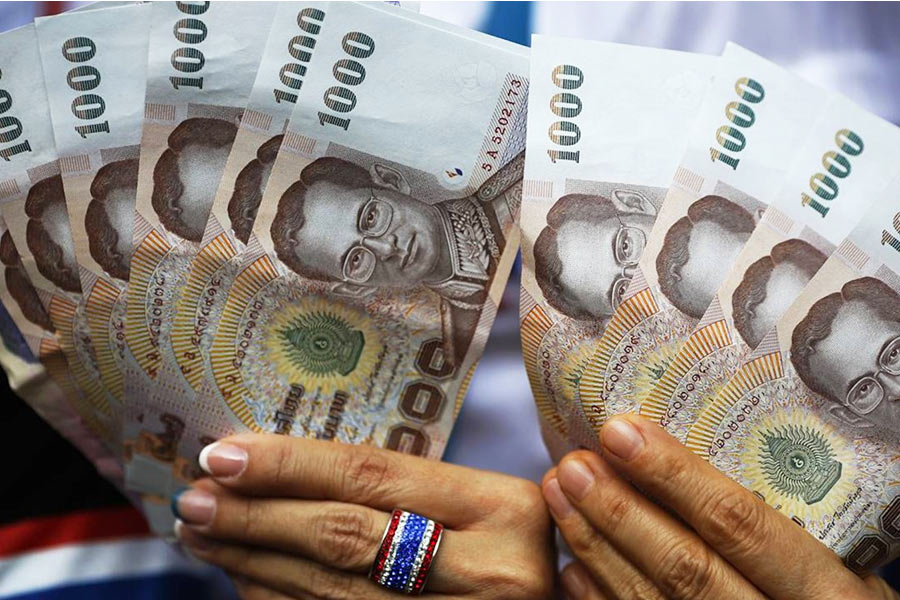
Ensure the money changers are licensed and legitimate
ATMs: ATMs are prevalent in urban areas, tourist spots, and shopping districts, offering competitive exchange rates. Major credit and debit cards are commonly accepted. You should inform your bank about your travel plans to avoid any issues with card usage abroad.

Withdrawing Thai baht from ATMs offers security and convenience

Knowing about Thai currency will make your journey easier
In conclusion, having a basic understanding of the Thai Baht would enhance your travel experience, making transactions more straightforward and contributing to a more enjoyable and stress-free trip. If you have any further inquiries, please contact Asia King Travel for more assistance.
Read more: How much does it cost to travel to Thailand?